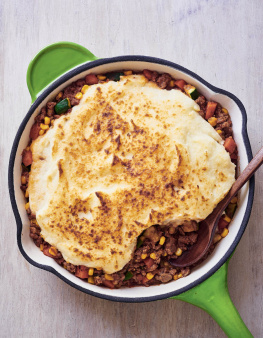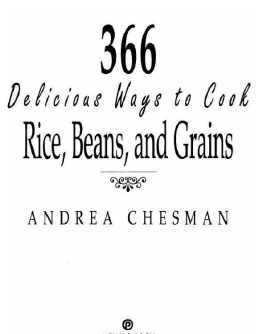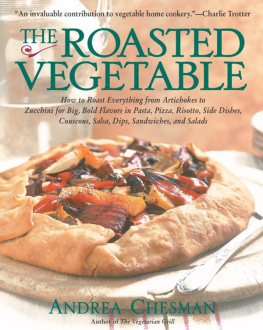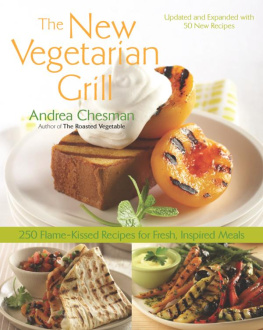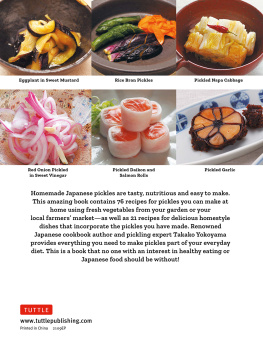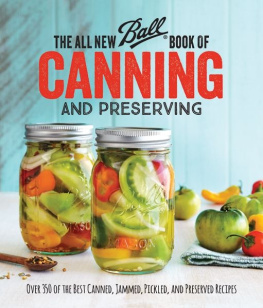
The Pickled Pantry

THE Pickled Pantry
Andrea Chesman
Illustrations by Lisa Congdon


To Sam, the pickle palate master, whose boundless enthusiasm kept me going
The mission of Storey Publishing is to serve our customers by
publishing practical information that encourages
personal independence in harmony with the environment.
Edited by Margaret Sutherland and Pam Thompson
Art direction and book design by Mary Winkelman Velgos
Text production by Vicky Vaughn Shea/Ponderosa Pine Design
Indexed by Andrea Chesman
Illustrations by Lisa Congdon/Lilla Rogers Studio
Photography by Addie Holland 17, David Shankbone/Wikimedia Commons 245, John Polak 214, Ricks Picks LLC 78, Robert Waterhouse 24, Sebastian Collett 38, Xan Price 138, Yvonne Tchida 220, and Zac Wolf 128
2012 by Andrea Chesman
All rights reserved. No part of this book may be reproduced without written permission from the publisher, except by a reviewer who may quote brief passages or reproduce illustrations in a review with appropriate credits; nor may any part of this book be reproduced, stored in a retrieval system, or transmitted in any form or by any means electronic, mechanical, photocopying, recording, or other without written permission from the publisher.
The information in this book is true and complete to the best of our knowledge. All recommendations are made without guarantee on the part of the author or Storey Publishing. The author and publisher disclaim any liability in connection with the use of this information.
Storey books are available for special premium and promotional uses and for customized editions. For further information, please call 1-800-793-9396.
Storey Publishing
210 MASS MoCA Way
North Adams, MA 01247
www.storey.com
Printed in the United States by Versa
10 9 8 7 6 5 4 3 2 1
Library of Congress Cataloging-in-Publication Data
Chesman, Andrea.
The pickled pantry / by Andrea Chesman.
p. cm.
Includes index.
ISBN 978-1-60342-562-9 (pbk. : alk. paper)
1. Pickles. I. Title.
TX805.C437 2012
641.6162dc23
2012004608
contents

Introduction

People come to pickling for so many reasons. Some people are motivated by sheer love of eating all things sour. Others are practical do-it-yourselfers who pickle to preserve excess produce or to extend their options for eating local year-round. Still others are preserving tradition. I came to pickling for a combination of those reasons.
I made my first batch of pickles a long time ago. I was a recent college graduate with my first garden, a small patch in a community garden. What a thrilling experience it was. I put a seed in the ground, and it grew!
Naturally I wanted to pack all that freshly harvested goodness into jars to preserve it for the coming winter. I asked my grandmother how she made her pickles. My grandmother was not a woman enthralled by the domestic arts, nor was she overly chatty. She told me to put cucumbers and dill in a crock, cover them with water, then add enough salt so its just before you gag.
Did I mention my grandmother had an indomitable will and a cast-iron stomach? I followed her instructions to the letter, adding only enough salt so it was just before I gagged. Within days, I had a slimy, foul-smelling brew. Apparently, our gag reflexes did not match. It was years before I tried pickling again.
Many gardens later, I had the opportunity to collect pickle recipes and gather them together for a book. It began with a pickle barter party. Because so many traditional recipes yielded seven or nine jars of pickles (a boiling-water-bath canner load), I thought it would be a great idea to swap jars of home-canned pickles the same way people swap cookies at Christmastime. My friends were all fellow back-to-the-landers, and preserving food by canning, pickling, and freezing was part of the lifestyle. Todays urban food swaps accomplish much the same thing.
For the book Pickles & Relishes: 150 Recipes from Apples to Zucchini, I tested hundreds of different types of pickles. Each batch of pickles was tasted and evaluated by a group of colleagues at Garden Way Publishing (which later became Storey Publishing, the publisher of this book). Throughout the better part of a year, I brought a jar of pickles to work each day to be sampled and evaluated at lunch by pickle aficionados. We called it the pickle du jour program.
What I learned as I tasted my way through batch after batch of pickles is that preferences vary widely. For some people, no pickle is too sweet; others hate garlic. But inevitably, there is a perfect pickle for every taste. It just requires collecting and inventing many, many recipes.
Over the years, Ive watched many trends in pickle making. In the 1970s, many people rediscovered pickle making as they moved back to the land and reclaimed many traditional skills: home brewing, wool spinning, bread baking, and, of course, pickle making.
Then came the health food years, when many people, including myself, worried about salt and sugar in pickles. I had a few no salt pickle recipes in my first book that I dont think about revisiting. Interest in making pickles waned as the global supermarket enticed Americans to eat fresh foods regardless of the season. In the 1980s, few saw the need to preserve food as long as the supermarket was able to supply fresh vegetables year-round. A couple of times I was asked to teach a pickling course, but the courses failed to attract many students.
A lot of pickling knowledge wasnt so much lost as it was buried, skipping a generation or two.
Recently a perfect storm of food safety scares plus an economic downturn has led many people to reconsider gardening and preserving. A desire to eat local foods in season and reduce the carbon footprint of the food we eat has made pickle making particularly attractive. As people have delved into local foods, a whole artisanal food movement around fermented foods making wine, cheese, beer, and lacto-fermented vegetables and fruit (i.e., pickles) has evolved. Some pickle devotees are attracted to claims regarding the health benefits of fermented foods, while others are enthusiastic about reviving traditional foodways. And, of course, pickles taste good!
Pickles are foods preserved with either salt or vinegar. Both the salt and vinegar act to inhibit the growth of spoilage bacteria. Pickles may contain enough acid to keep well in a refrigerator without heat processing, or they may be canned (i.e., processed in a boiling-water bath). Some pickles can be frozen.
When pickles are preserved in salt, they may be called crock pickles, salt pickles, brined pickles, fermented pickles, or lacto-fermented pickles. Whatever you call them, these are, I think, the most wonderful pickles, preserved by methods that have changed little over the centuries. Pickles that are preserved with vinegar are called fresh-pack pickles or vinegar pickles, because the vegetables are packed fresh into a vinegar solution. Bread and butter pickles are a traditional favorite among the many fresh-pack pickles. Most fresh-pack pickles are processed in a boiling water bath for long keeping.
Next page

